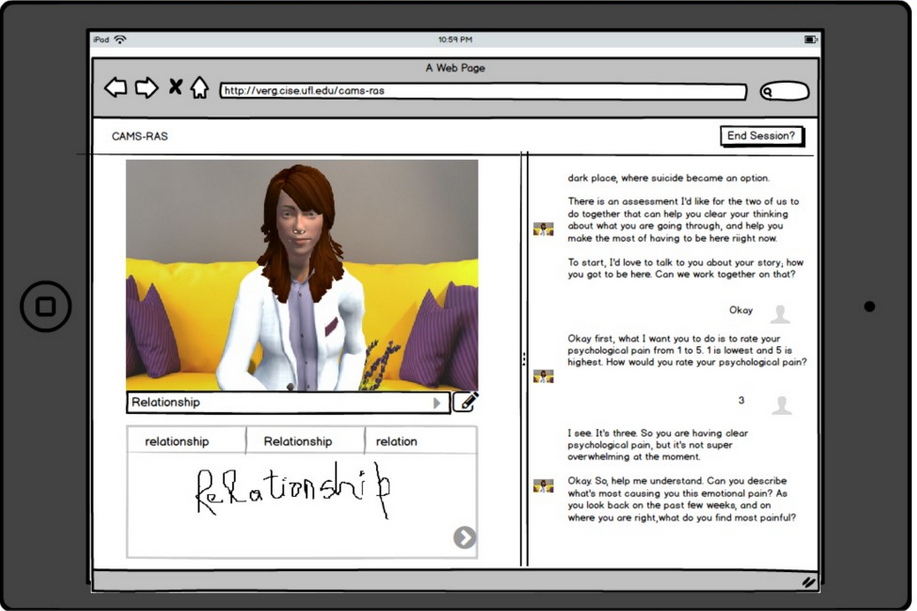Goals
The goal of the project was to develop a virtual agent-based suicidal health intervention to reduce suicide and readmission of suicidal patients.
Collaborators
Suicidologists, Therapists, Psychologists
My Role as Virtual Agent and User Experience Researcher
My role in the project was to:
- provide virtual agent domain knowledge for non-computer science experts. I helped team understand best-practices for designing agent-based health intervention based on prior literature on virtual agents and my prior experience of developing virtual agents.
- develop and iterate prototypes based on user feedback during iterative prototyping.
Target Audience
Suicidal Patients
Technology Used
Balsamiq and InVision for low and high-fidelity prototyping.
Unity, C#, Web Technologies for interactive prototype.
Approach
-
User-centered Design Process
The design process involved iterative prototyping with continuous user-testing. The development phase involved low and high fidelity prototypes to test and refine ideas.


-
Kirkpatrick Evaluation Model.
Kirkpatrick evaluation model was used to identify evaluation metrics.

User Testing
The system was evaluated with 24 suicidal patients during iterative prototyping.
Results
- Users found virtual intervention via tablets acceptable.
- Users also found interaction with “virtual doctor” to be easy to use, helpful, and entertaining.
Please refer following publication for more details.
Journal Publications
Dimeff, L., Jobes, D. A., Chalker, S. A., Piehl, B., Duvivier, L. L., Lok, B. C., Zalake, M. S., Chung, J., & Koerner, K. (2018) A Novel Engagement of Suicidality in the Emergency Department: Virtual Collaborative Assessment and Management of Suicidality. General Hospital Psychiatry. Learn More